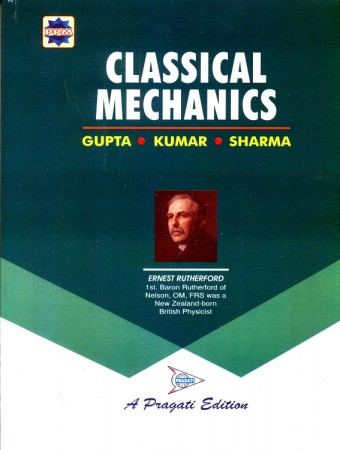Classical Mechanics By Gupta Kumar Sharma.pdf
Course Objectives: Formulate the basic underlying principles of classical mechanics. (Self-study questions are a good way to do this).Demonstrate understanding of the procedures for deriving various equations and relations from physical principles, such as Lagrange’s equations from Newton’s second law. (Short answers are good, but longer answers with explanations if necessary are better.) Study the elementary mathematics of mechanics, such as calculus, trigonometry, and vector algebra. (A problem-based approach is superior to a self-study approach.) Demonstrate an ability to define, relate, manipulate, simplify, and explain vector quantities. (A problem-based approach is superior to a self-study approach.) Demonstrate an ability to properly use the units of measurement in a problem-based course. (A problem-based approach is superior to a self-study approach.) Demonstrate an understanding of the basic properties of various physical systems that are useful for understanding basic mechanics. (A problem-based approach is superior to a self-study approach.) Understand and explain the basic properties of energy, such as energy conservation, total energy, work, and kinetic energy. (A problem-based approach is superior to a self-study approach.) Demonstrate a familiarity with basic concepts such as forces, torques, linear momentum, angular momentum, and kinetic energy. (A problem-based approach is superior to a self-study approach.) Demonstrate an understanding of the normal modes of a vibrating system. (A problem-based approach is superior to a self-study approach.) Understand the role of inertia in a vibrating system, and demonstrate the difference between kinetic energy and potential energy. (A problem-based approach is superior to a self-study approach.) Understand the role of angles describing velocities and accelerations in a vibrating system. (A problem-based approach is superior to a self-study approach.) Understand the role of kinetic energy in a vibrating system, and understand the role of energy in a vibrating system. (A problem-based approach is superior to a self-study approach.) Understand the role of energy in a vibrating system, and understand the role of time in a vibrating system. (A problem-based approach is superior to a self-study approach.) Understand that other properties of a system can be useful in determining the vibrational properties of the system, such as symmetry of a system, symmetry-type interactions, heat capacity, and the response of a system to a stimulus.
https://sway.office.com/upwnEHJy8tlE4R2E
https://sway.office.com/H5JJ3H6LOlcFf0BK
https://sway.office.com/DbvQDchRfpr1feCr
https://sway.office.com/BVAoPbBszk6z4soy
https://sway.office.com/vEDepc9ljVGSTNFk
https://www.mixily.com/event/9030900999373292550
https://www.mixily.com/event/7736881247974978343
https://www.mixily.com/event/532029447907557045
https://www.mixily.com/event/7783469410304438653
https://www.mixily.com/event/5800375251833079060
https://www.mixily.com/event/3353071386339495443
https://www.mixily.com/event/6217877018759712650
https://www.mixily.com/event/8059351961668433035
990bd042c5
http://gabibeltran.com/?p=3560
https://teenmemorywall.com/passper-for-rar-3-2-0-3-multilingual-exclusive/
http://mundoconsultoria.com/?p=2215
http://tutmagazine.net/download-pe-design-next-9-crack-8-top/
https://www.seujobs.com/manalink-3-0-shandalar-download-fixed/
